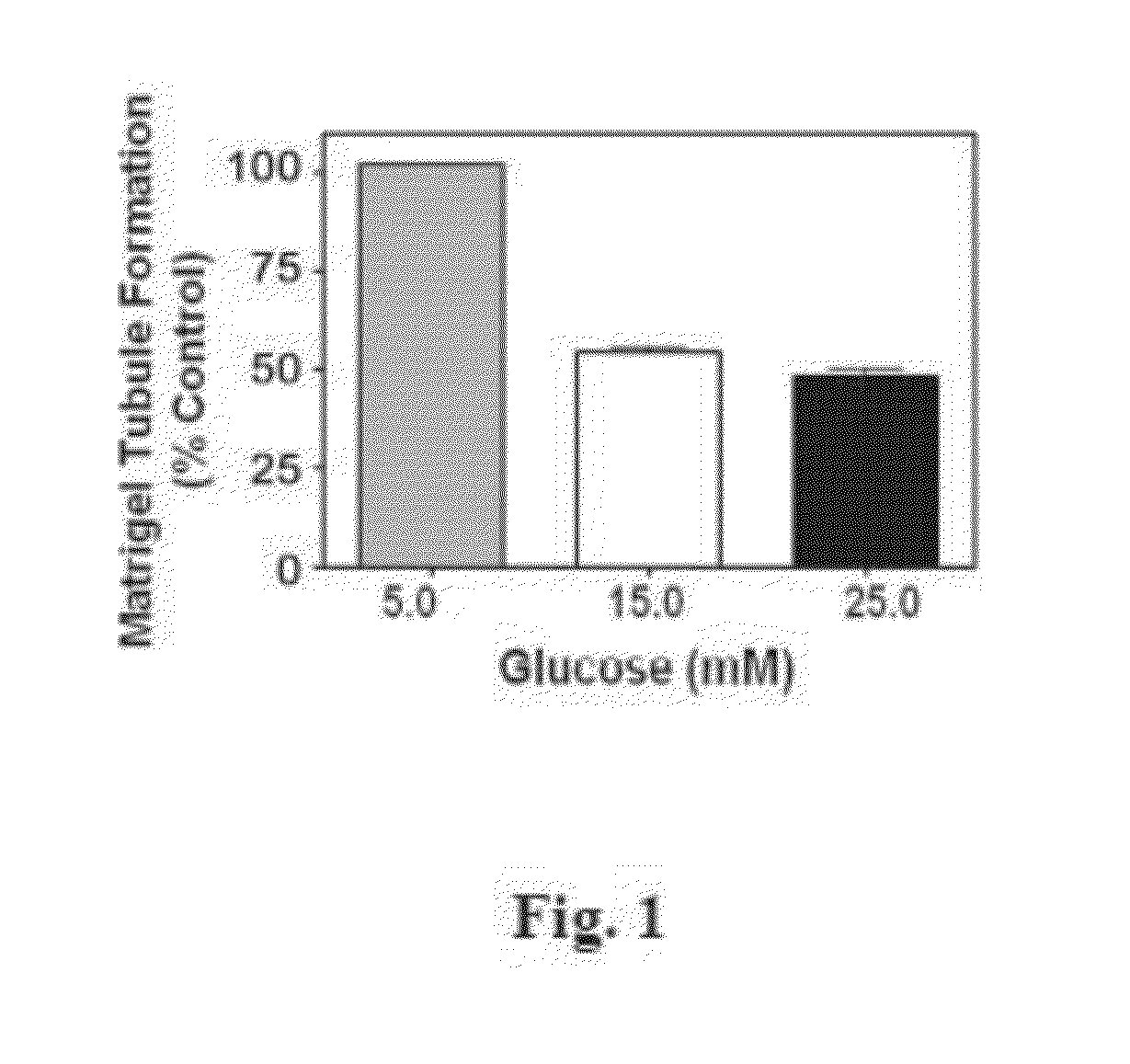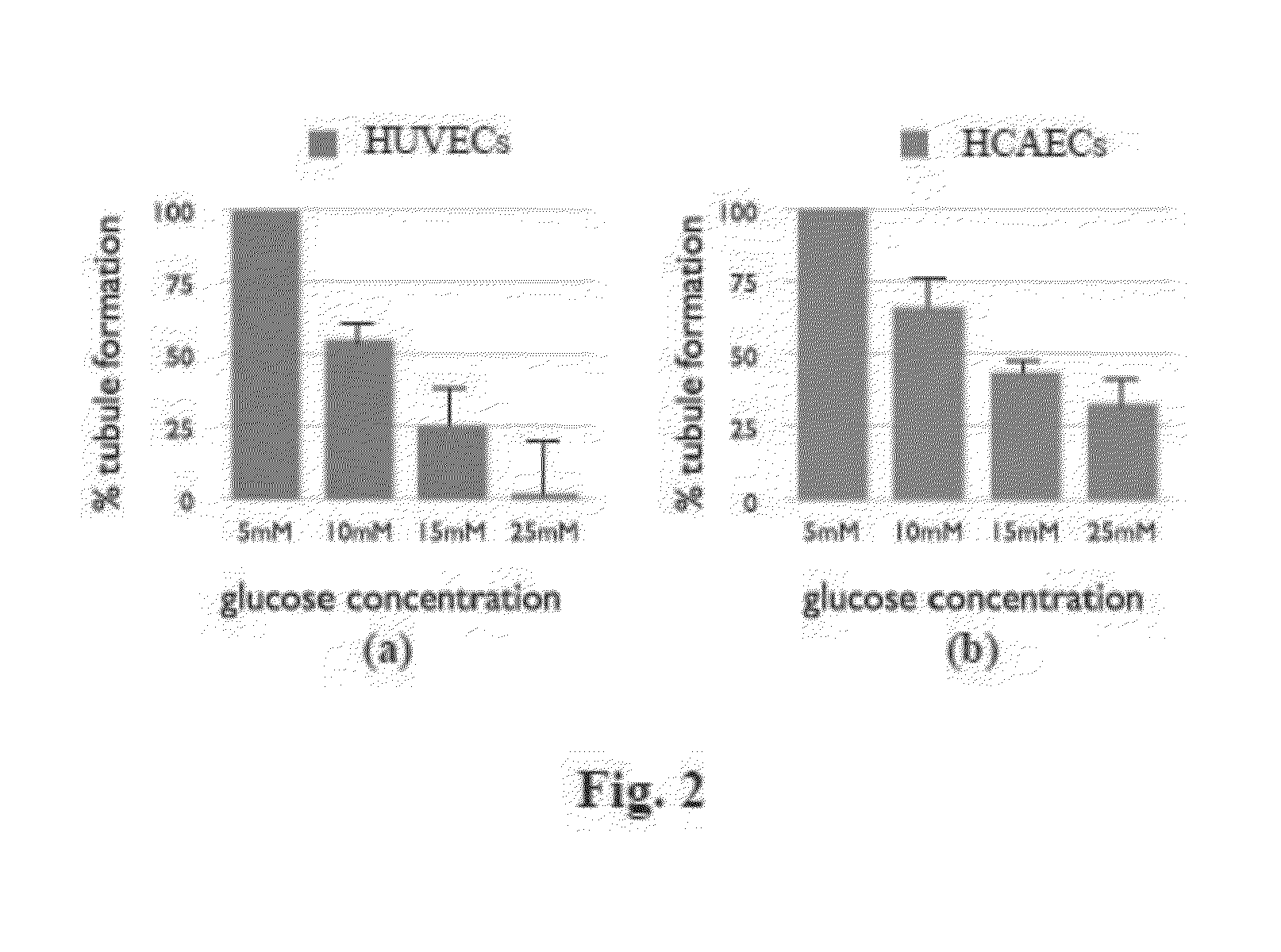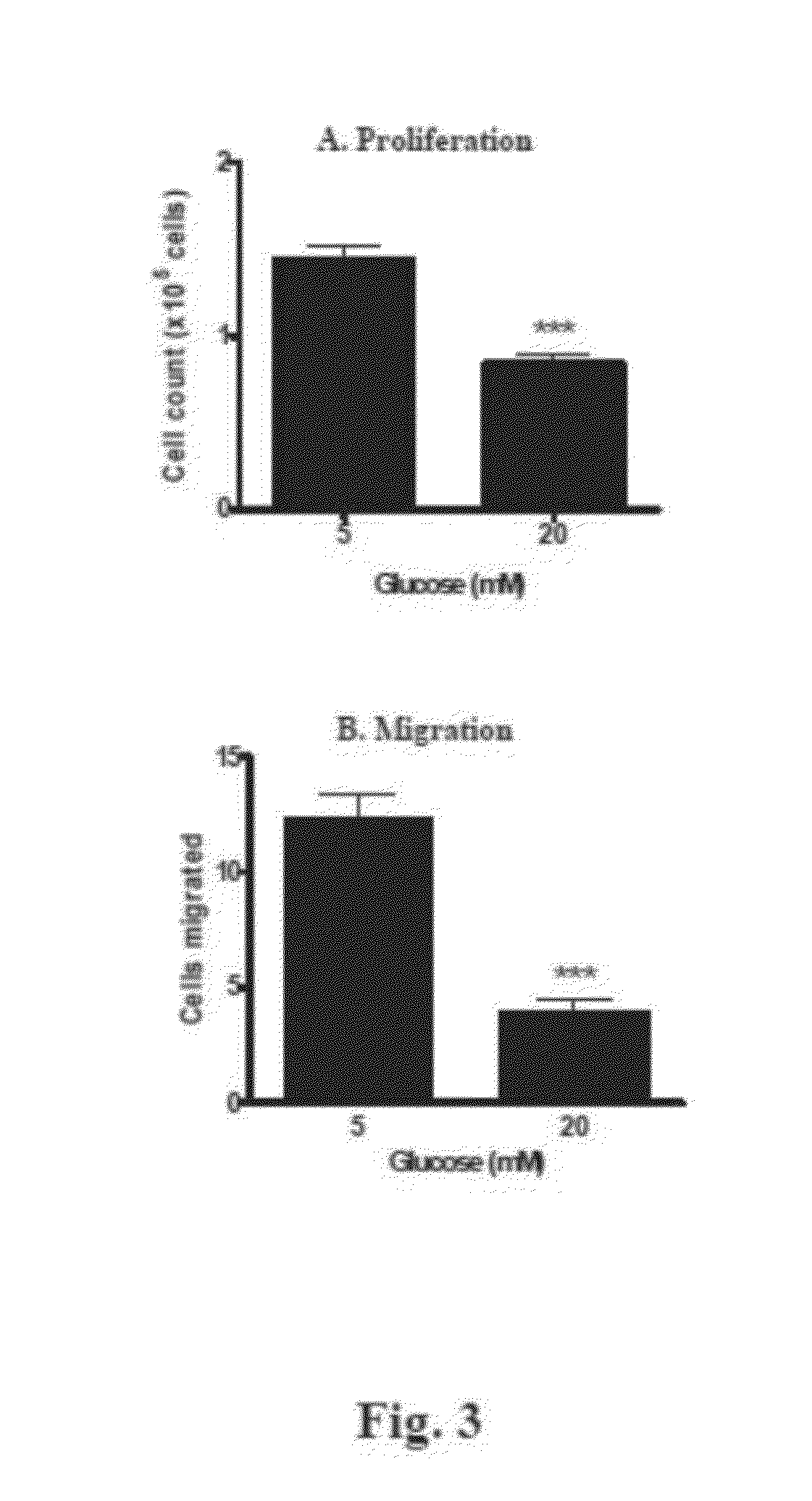Method Of Treatment Of Vascular Complications
a technology for vascular complications and vascular disease, applied in the field of vascular complications and/or vascular disease treatment and prophylaxis, can solve the problems of loss of sensation in the peripheral limb, increased risk of infection, and potential entry of bacteria, so as to promote vascular repair, enhance or otherwise increase expression and/or activity and/or level, and enhance the ability of a cell to participa
- Summary
- Abstract
- Description
- Claims
- Application Information
AI Technical Summary
Benefits of technology
Problems solved by technology
Method used
Image
Examples
example 1
Materials and Methods
1.1 Endothelial Cell Culture and Glucose Treatments:
[0326]Human umbilical vein endothelial cells (HUVEC) were cultured and expanded for use in investigations at no later than passage 4. Cells were grown under standard culture conditions of 37° C. in a 95% air / 5% CO2 atmosphere in M199 media (Cell Applications) supplemented with 10% foetal bovine serum (FBS; Trace Bioscience) and with a D-glucose concentration of 5.0 mM. For hyperglycemic studies D-glucose (Sigma-Aldrich) was added to the above media and filter-sterilised to give glucose concentrations of 10, 15, 20 and 25 mM for a period of 24 h. Twelve hours prior to experiments, human endothelial cells were cultured in glucose-free media. To examine the effects of hypoxia, cells were grown for 6 to 18 h in a hypoxia incubator (1% O2 / 5% CO2 / N2 balance; Kendro International) at 37° C. Human recombinant vascular endothelial growth factor (VEGF; Sigma-Aldrich) was added to media at a final concentration of 10 ng / m...
example 2
Hyperglycemia Inhibits Neovascularization and Angiogenesis
[0360]The inventors have assessed the effects of glucose concentration on HCAECs and HUVECs vascular network formation in Matrigel assay, as shown in FIG. 1 and FIG. 2B. The results illustrate that glucose induces a concentration-dependent inhibition of HCAEC vascular network formation in Matrigel by 48±1.6% attenuation vs. control (at 15 mM glucose, P<0.001; FIG. 1). Similarly, the inventors also investigated the effects of glucose concentration on key angiogenic processes (proliferation, cell migration and tubulogenesis) on the impairment of endothelial cell function in HUVECs as illustrated in Table 2 below, FIG. 2A, FIG. 3A and FIG. 3B. These results demonstrate that significant impairment of endothelial cell function with increased glucose concentration of both HUVECs and HCAECs cells.
TABLE 2Hyperglycemia impairs key angiogenic processes in HUVECsImpairment of endothelial cellfunction (% 5 mM control)Glucose (mM)101520Pr...
example 3
Hyperglycemia Inhibits Thioredoxin Activity
[0369]The inventors have investigated the effects of hyperglycemic culture conditions on thioredoxin activity in vitro, as determined by insulin disulphide reduction assay. A noticeable and significant glucose mediated reduction in TRX activity was also observed in HCAECs as shown in FIG. 7.
[0370]These results illustrate that hyperglycemia not only inhibits neovascularization and angiogenesis but it also results in concomitant decrease in thioredoxin activity.
PUM
| Property | Measurement | Unit |
|---|---|---|
| time | aaaaa | aaaaa |
| size | aaaaa | aaaaa |
| particle size | aaaaa | aaaaa |
Abstract
Description
Claims
Application Information
 Login to View More
Login to View More - R&D
- Intellectual Property
- Life Sciences
- Materials
- Tech Scout
- Unparalleled Data Quality
- Higher Quality Content
- 60% Fewer Hallucinations
Browse by: Latest US Patents, China's latest patents, Technical Efficacy Thesaurus, Application Domain, Technology Topic, Popular Technical Reports.
© 2025 PatSnap. All rights reserved.Legal|Privacy policy|Modern Slavery Act Transparency Statement|Sitemap|About US| Contact US: help@patsnap.com



